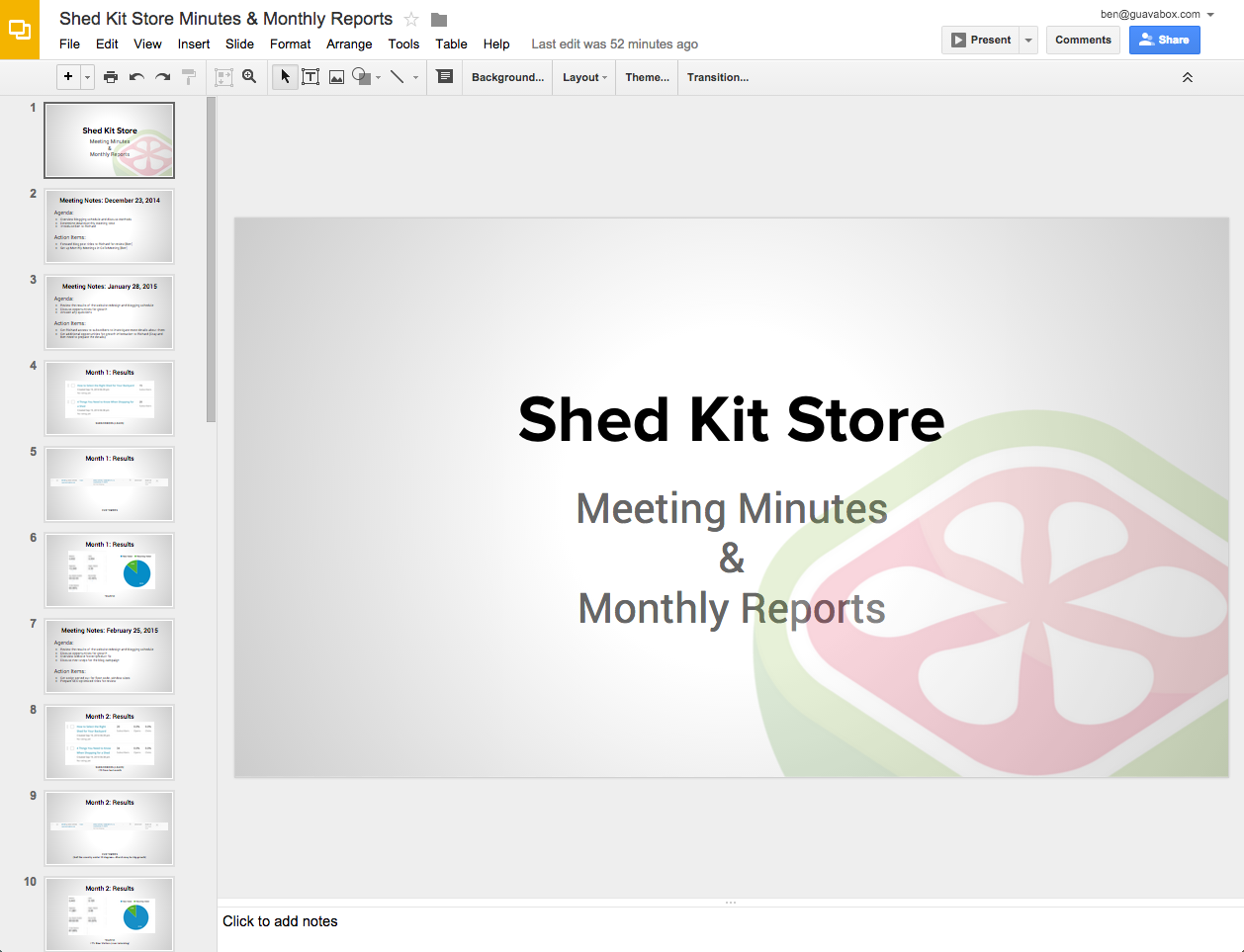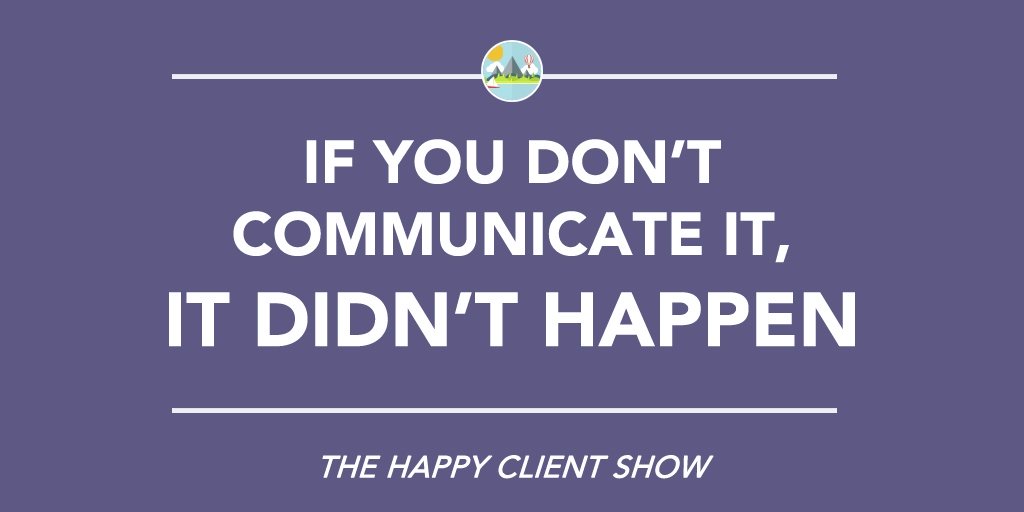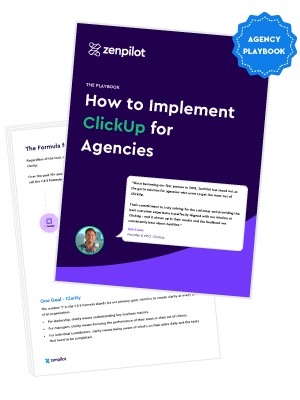5 Ways to Prevent Client Conflict
To chat with Gray and have ZenPilot lead your team through the last project management implementation you'll ever need, schedule a quick call here.
When unspoken issues spring up in the servicing of an account, it can create negative conflict and derail progress in a client relationship.
One of the most successful inbound retainers that my colleague and co-host Andrew ever ran—a campaign that was generating significant results within eight weeks—fell apart because of internal conflict between the client and our team.
We learned a valuable lesson from this experience: that we had to reevaluate our strategy for preventing client conflict before it occurred.
Three Causes of Client Conflict
Before we go over some methods for preventing conflict, let’s discuss the three general causes. It can be boiled down to three categories:
- A lack of communication
- Unmet expectations
- A lack of faith


Now, let’s dive into five ways to prevent conflict before it even occurs.
Set Clear Expectations in the Sales Process
The sales process is often where client relationships begin to go bad because so often it’s about making the sale. Too many times, agencies set unreal expectations that root in the client’s minds. When those expectations aren’t met, conflict rises quickly to the surface.
It’s vital that your team is upfront, real and honest with how your agency operates and the results you can deliver. Your worst enemy is the unknown, so do everything you can to help prospective clients understand your process.
Here are a few ways to set clear expectations in the sales process.
Educate your prospective clients:
At every level of the sales process, talk about the why rather than the how. It’s one thing to discuss the what, but don’t be tempted to leave out the why. Help them understand your methodology and why your agency does what it does.
Marcus Sheridan talks about Assignment Selling, which requires your clients to check out various pieces of content before you move forward in the relationship.
If your client doesn’t understand why you’re doing what you’re doing, eventually they won’t see the value of signing the check any longer regardless of the results.
Present a roadmap:
At GuavaBox, we utilize the Inbound Marketing GamePlan. This is a 12-month marketing strategy that covers in-depth milestones and steps of a journey to achieving the client’s goals. By presenting this roadmap to clients, we are showing them the way and setting expectations of the various landmarks we will encounter along the way.
Underpromise—over-deliver:
If you think you can deliver results in six months, say it will take nine months. Do this for several reasons:
- It will make you look like a hero when you deliver in six months
- Sometimes, unexpected obstacles pop up along the way that will slow your progress. By overestimating, you’re adding a buffer to prepare and adjust to these challenges without losing the faith of your clients.
It’s important to give your team leeway to achieve what you discuss.
Perfect Your Client On-Boarding Process
Once the sale is made and the client is officially part of the fold, you’ll more than likely be passing the relationship on to the project management team who’s going to fulfill your new contract.

Due to the transition of relationships, there is a gap for error and bumpiness. A client on-boarding process will not only help smoothly transition teams, but will also reiterate your expectations.
What an on-boarding process should do:
- Again, introduce the project management team to the client
- Reiterate the expectations, services and goal of the relationship
- Overview a timeline—what are the milestones and when do they occur?
- Define roles—who’s doing what?
- Designate a specific point of contact—who will your agency be in-touch with on a regular basis with updates and questions?
- Draw out any early points of conflicts—get those frustrations out there early!
- Kindle some chemistry—get everyone excited!
Maintain Regular, Real Communication
A lack of communication is an environment where conflict occurs, festers and eventually explodes in the relationship.


One of the most effective strategies that we ever implemented at GuavaBox was weekly client meetings—held either on the phone or in person. For our teams this was a great time to check in, review any results from our work, address any questions and bring up any outstanding items.
Even if this is a 10-minute phone call where you say, “Well, I don’t have anything, you don’t have anything, talk to you next week,” you’re building a relationship and created a channel to address conflict in the early stages.
Overall, this will keep your projects on track and will keep your relationships in a healthy place.
Keep your weekly notes in one place:
To take your weekly communication to the next level, create a centralized location where you can take notes.
At GuavaBox, we use Google Slides to keep agendas, analytics and to-do lists all in one place for the client to access at anytime.

Practice Proactive Overcommunication
There’s a saying I have, “You want to overcommunicate before you undercommunicate.”
- If you’re uncertain—ask
- If you completed a task—talk about
- If something’s not right—bring it up
There are so many activities we do for our clients that often are behind the curtain, such as development work and HubSpot set up. It’s our job to tell the story of what we’ve done on behalf of our clients and what it all means.

Never be afraid to reach out. Clients want to know that you’re working on their behalf.
Keep Decision Makers in the Loop
Things may be groovy with your point of contact, but sometimes the decision maker might step in and pull the plug because they’re not sure what’s going on.
Just because you have a great relationship with your point of contact doesn’t mean that the relationship is healthy. Too often, decision makers get put out of the conversation. Regardless of your results, if they don’t know what you’re doing and what the results are, all they’re going to see is the price of your services and not the benefit.
It’s important for decision makers to know what you’re doing and to experience the victories and milestones you encounter along the journey. They sign the checks and they should know what’s going on.
Caution—be careful how you communicate with them:
It’s OK to get technical with your point of contact—especially if they’re a member of the marketing staff—but if you’re dealing with a president or CEO, be direct and to the point.
What is the return on investment of your efforts? How are you progressing towards the goal? Also be sure to:
- Avoid marketing jargon
- Answer questions clearly and directly
See the world through their eyes. How do they determine success? Once you evaluate that, translate inbound into it.





